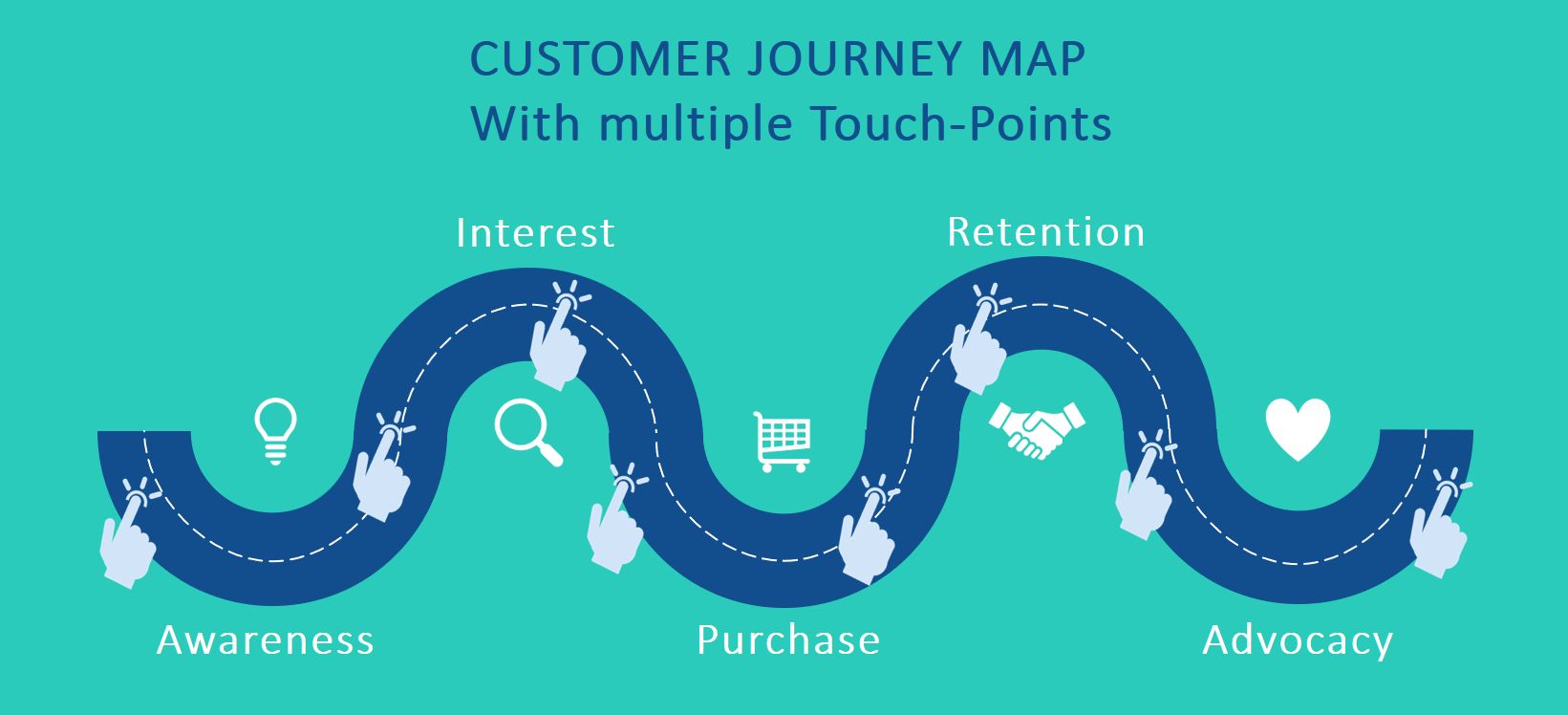We all have experience with good or bad restaurants and have developed our own criteria for how we rate them. These criteria ultimately decide whether we will visit the restaurant again or even recommend it to others. And the way you feel about the restaurant is the way customers and potential customers feel about interacting with your business.
The entirety of these experiences is called Customer Experience and comprises three factors:
Customer Centricity
The customer and his problems are the focus of your business activities.

Jeff Bezos (Amazon CEO)
Customer experience is not limited to a single function in the company, but is an interdisciplinary topic. It extends across all media, communication channels and corporate divisions.
However, while many are only concentrating on marketing, sales and delivery of their products and services, a lot of potential in after sales is falling by the wayside. But this is precisely where there are unexpected opportunities to turn customers into fans or even brand ambassadors.
Products and machines alone offer little potential for differentiation from the competition. Manufacturers are required to develop unique selling points in other areas and to retain customers in the long term.
The strategic and operational role of the service business has gained massively in importance over the last two decades. For manufacturers and their service organizations it is essential to actively shape this change and find the right focus. In order to be able to capture the growing profit streams, companies have to build up differentiating features vis-à-vis their competitors and strengthen customer relationships in the long term. This does not only include the development of corresponding offers and capacities, but also the securing of the highest possible customer satisfaction.
The service requirements of customers have changed dramatically due to new usage and purchasing habits in the age of digitalization. Your organization must adapt accordingly in order to remain successful. After all, digitization not only changes products and processes, but also affects the demands of users. The usage habits from private life are increasingly being transferred to the business world. Customers expect the service to be accessible via various channels, as well as simple options for error messages and short response times with satisfactory solution proposals.
67% of B2B customers expect omni-channel communication from their business partners. To ensure customer satisfaction, successful service organizations must be able to handle a large number of tickets through various channels, even at peak times.
Increasing cost pressure and the low availability of resources force service organizations to use their existing resources highly efficiently. In addition, repair jobs are becoming more and more specialized and complex. On the one hand, customers' operating budgets are more and more decreasing and, on the other hand, qualified technicians are hardly available. Uncoordinated dispatch of technicians in the field and incorrect route planning can lead to unnecessary idle time and tie up important capacities. Similarly, the deployment of technicians with an unsuitable skill set leads to avoidable second appointments and customer dissatisfaction.
Without the use of digital diagnostic and troubleshooting tools, technicians are up to 25% above the optimal repair time. Requests pile up and demand additional resources. More than one in three service organizations criticizes the efficiency of their own personnel scheduling and service planning. Since personnel is usually the largest cost item, service organizations must create the greatest possible efficiency in order to remain profitable.
The change to a proactive service is already mandatory and at the same time challenging. The customers' tolerance for downtime is steadily decreasing. They expect 100% availability of machines and products. Unexpected machine downtime is a major annoyance for operators and service organizations. It causes production losses on the customer side and puts pressure on the service organization, as unforeseen operations can lead to bottlenecks in day-to-day business. Quality and customer satisfaction suffer as a result.
Customers will trust the service provider that can guarantee the least downtime. In the near future, service organizations will be required to identify and eliminate impending production equipment failures before their effects are felt.
Henry Ford (1863 – 1947)
They enable the acceptance and processing of service requests via multi-channels such as social media, contact forms and chatbots. At the same time, visibility and compliance with SLAs are ensured and tickets are systematically categorized. Coordinated management in a central system provides transparency, shortens response and processing times and thus increases customer satisfaction.
It automatically deploys technicians according to requirement profile (skills) and availability (location) and plans the fastest possible deployment. Optimized personnel scheduling maximizes the efficiency of the operational business, frees up new capacities and massively accelerates problem solving.
This supports and relieves the technician in the field with dynamic checklists, access to knowledge databases and the machine file. The use of mobile applications helps technicians to solve complex tasks systematically, shortens repair times and increases the first-time fix rate. At the same time, the apps help the technician to up- and cross-sell and make him a valuable salesperson.
You control service requests and involve the customer in the service process. The customer can use the portal to transfer and retrieve information or order activities. In this way, the customer can contribute to solving problems or solve smaller problems completely independently. In addition, the customer gains extensive transparency about the course of the service process. The integration of the customer relieves the employees of the service organization and reduces the number of avoidable tickets, allowing the employees to focus on complex tasks.
These filter general inquiries, communicate with customers in real time and are available at all times. As an upstream tool, digital assistants reduce the amount of human interaction within the service organization and automate communication as well as simple tasks.
It provides the right resources at the right time. The planning of upcoming service orders through SLAs and IoT-based machine data reduces the number of unplanned operations in daily business. Real-time control and visibility of inventory and feedback with the ERP system ensures that materials are always available when they are needed. Long waiting times due to missing spare parts are thus drastically reduced and demand peaks are better anticipated and controlled.



Similar to a strategy game, understanding the rules of the game and quickly adapting to changing situations leads to victory. This behaviour can also be transferred very well to the business world. The keyword is "Experience Economy", where people do not buy products but experiences.